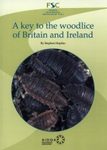Popular Science
By: Judith S Weis(Author)
247 pages, 8 plates with 28 colour photos and illustrations; 41 b/w photos, 5 b/w illustrations, 2 tables
"If we live out our span of life on the earth without ever knowing a crab intimately, we have missed a good friendship" - William Beebe, 1932
![Walking Sideways Walking Sideways]()
Click to have a closer look
About this book
Customer reviews
Biography
Related titles
About this book
The world's nearly 7000 species of crabs are immediately recognizable by their claws, sideways movement, stalked eyes, and thick outer shells. These common crustaceans are found internationally, thriving in various habitats from the edge of the sea to the depths of the ocean, in fresh water or on land. Despite having the same basic body type as decapod crustaceans – true crabs have heavy exoskeletons and ten limbs with front pincer claws – crabs come in an enormous variety of shapes and sizes, from the near microscopic to the giant Japanese spider crab.
In Walking Sideways, Judith S. Weis provides an engaging and informative tour of the remarkable world of crabs, highlighting their unique biology and natural history. She introduces us to recently discovered crabs such as the Yeti crab found in deep sea vents, explains what scientists are learning about blue and hermit crabs commonly found at the shore, and gives us insight into the lifecycles of the king and Dungeness crabs typically seen only on dinner plates. Among the topics Weis covers are the evolution and classification of crabs, their habitats, unique adaptations to water and land, reproduction and development, behavior, ecology, and threats, including up-to-date research.
Crabs are of special interest to biologists for their communication behaviors, sexual dimorphism, and use of chemical stimuli and touch receptors, and Weis explains the importance of new scientific discoveries. In addition to the traditional ten-legged crabs, the book also treats those that appear eight-legged, including hermit crabs, king crabs, and sand crabs. Sidebars address topics of special interest, such as the relationship of lobsters to crabs and medical uses of compounds derived from horseshoe crabs (which aren't really crabs).
While Weis emphasizes conservation and the threats that crabs face, she also addresses the use of crabs as food (detailing how crabs are caught and cooked) and their commercial value from fisheries and aquaculture. She highlights other interactions between crabs and people, including keeping hermit crabs as pets or studying marine species in the laboratory and field. Reminding us of characters such as The Little Mermaid’s Sebastian and Sherman Lagoon’s Hawthorne, she also surveys the role of crabs in literature (for both children and adults), film, and television, as well in mythology and astrology. With illustrations that offer delightful visual evidence of crab diversity and their unique behaviors, Walking Sideways will appeal to anyone who has encountered these fascinating animals on the beach, at an aquarium, or in the kitchen.
Customer Reviews
Biography
Judith S. Weis is Professor of Biology at Rutgers-Newark. She is the author of Do Fish Sleep? and coauthor of Salt Marshes: A Natural and Unnatural History.
Popular Science
By: Judith S Weis(Author)
247 pages, 8 plates with 28 colour photos and illustrations; 41 b/w photos, 5 b/w illustrations, 2 tables
"If we live out our span of life on the earth without ever knowing a crab intimately, we have missed a good friendship" - William Beebe, 1932




































![Cusco Amazónico [English]](http://mediacdn.nhbs.com/jackets/jackets_resizer_medium/14/148866.jpg?height=150&width=117)
